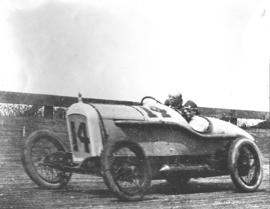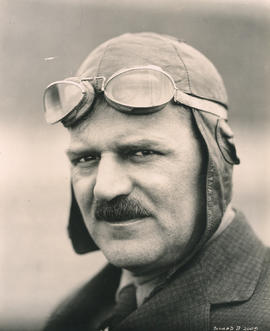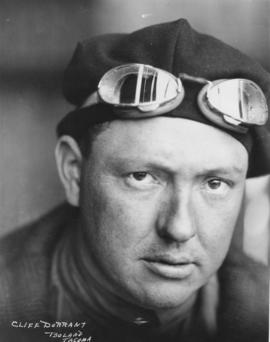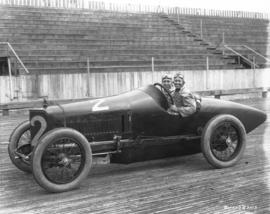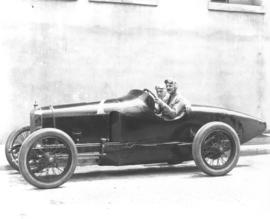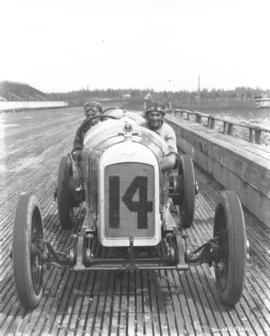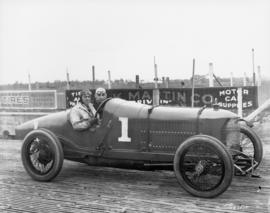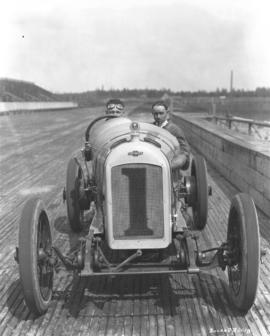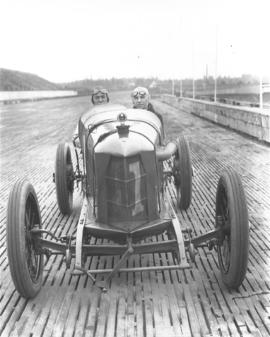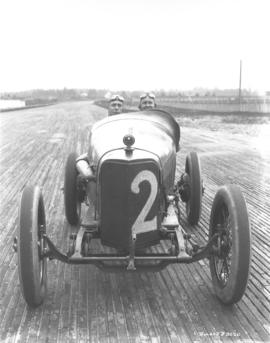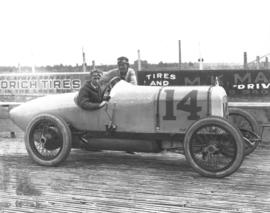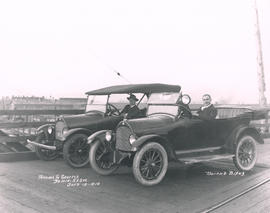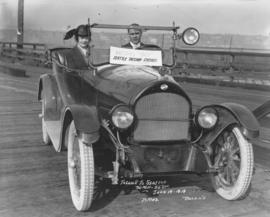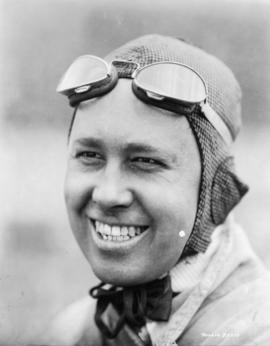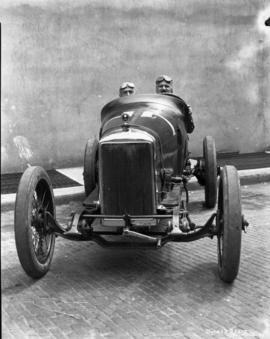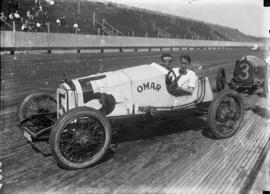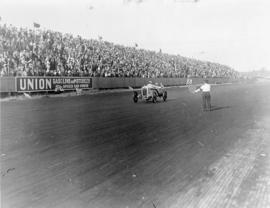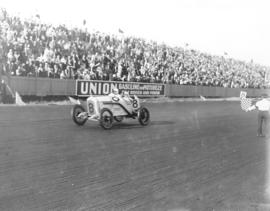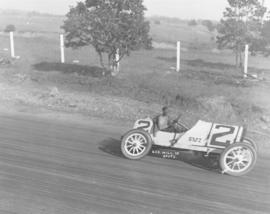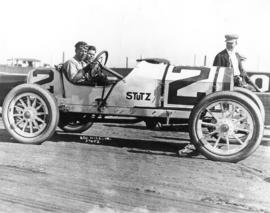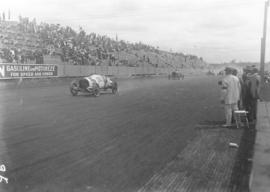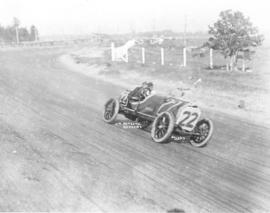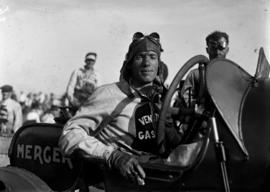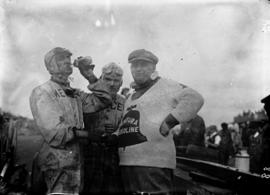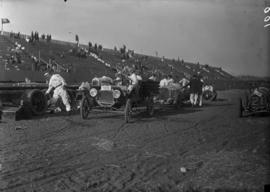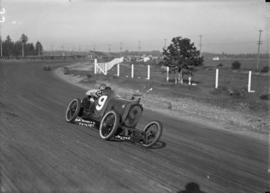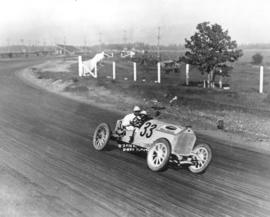- Item
- 1919-07-04
Part of Marvin Boland Photographs
On July 4, 1919, race car driver Eddie Hearne and his mechanic Harry Hartz whizz by in the "Durant Special." The Durant Special was originally built by millionaire sportsman and race car enthusiast Cliff Durant. Durant was also the son of William "Billy" Durant, founder of General Motors, Chevrolet and Durant Motors. The Special was now owned by driver Hearne. Hearne was a familiar face in Tacoma. He came in second in the 80 mile race and third in the 60 mile race, winning a purse of $2,100. Mechanic Hartz was one of the few who went on to become a driver and later a car owner. He ranks fifth on the all time winner's list for board tracks, above former boss Hearne. G51.1-090 (TDL 7/5/1919, pg. 1; Dick Ralstin's Racing Home Page)
Tacoma Speedway (Lakewood); Racetracks--Lakewood--1910-1920; Automobile racing--Lakewood--1910-1920; Hearne, Eddie; Hartz, Harry;
